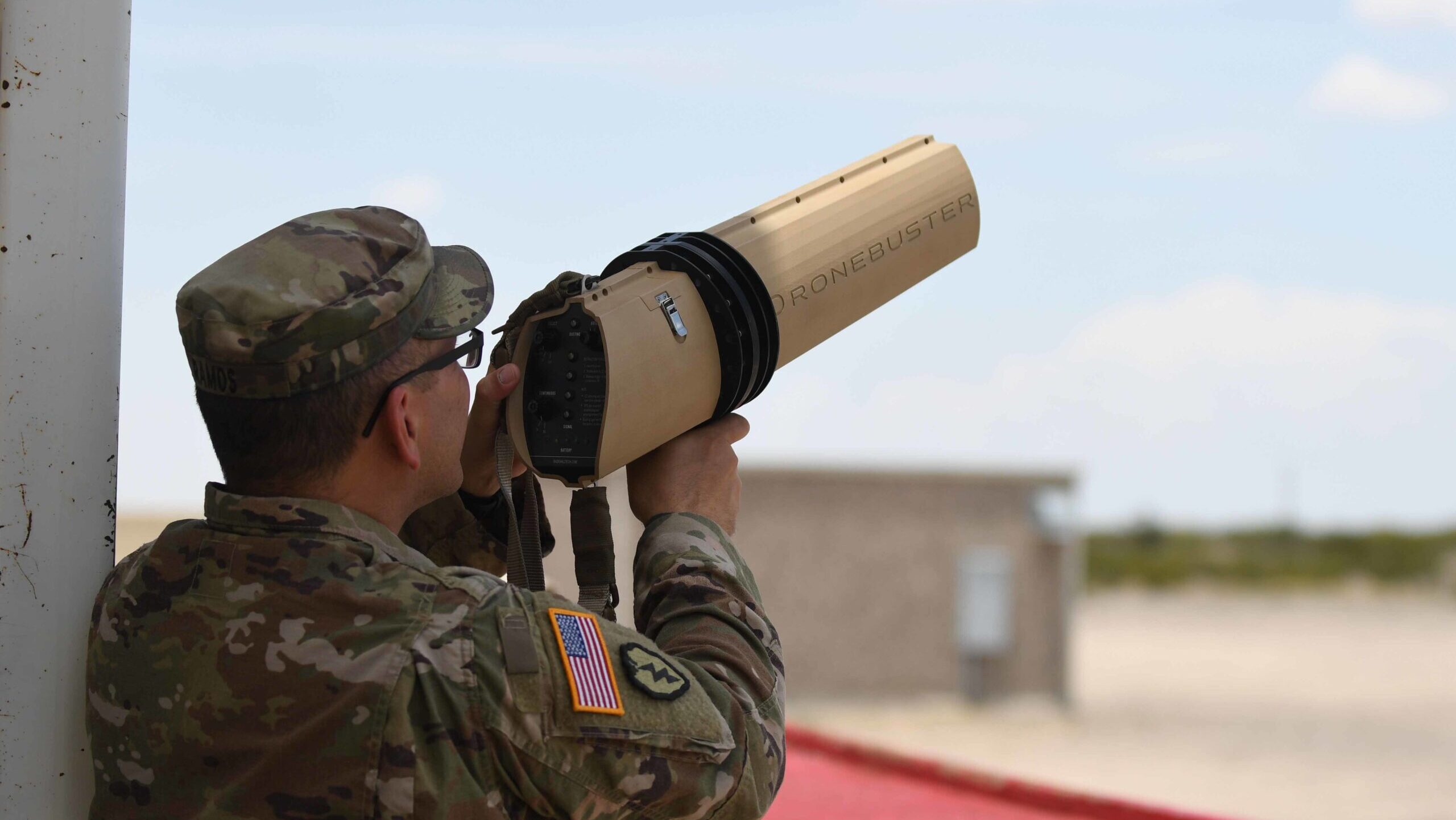
Soldiers from 5th Armored Brigade, First Army Division West, developed a course of instruction to counter the threat of commercial, off-the-shelf unmanned aerial surveillance vehicles at McGregor Range Complex, N.M. in June 2019. (Staff Sgt. Mylinda DuRousseau)
WASHINGTON — With a deteriorating security situation in the Middle East made worse by sporadic if potentially deadly drone attacks on US installations, both the US Army’s and US Central Command’s wishlists for fiscal 2025 prominently feature requests for more money for systems to shoot down those aerial threats.
Earlier this month the White House requested $849.8 billion in discretionary funding for the Department of Defense in fiscal 2025. As is law, though, the services and combatant commanders provide lawmakers with a list of areas and programs they could use additional dollars, known as the “unfunded priorities list.”
For its part, the Army said its proposed $186 billion budget request for next year could use some help to the tune of another $2.2 billion, according to documents provided to lawmakers and reviewed by Breaking Defense. Its top five unfunded priorities revolve around “force protection” with counter-unmanned aerial system (cUAS) platforms claiming the top three spots. The first two cUAS spots total $349 million but the Army’s list — marked with “controlled unclassified information” — does not detail to which systems those dollars would be directed.
It does list Anduril’s Roadrunner-Munition (Roadrunner-M) cUAS as its third unfunded priority, with a $4.5 million price tag for additional developmental dollars. Rounding out the top five are $91 million to purchase Stinger missiles and $10 million for the Low Altitude Stalking and Strike Ordnance (LASSO) program.
Other notable items on the Army’s wishlist include $63 million for its new Command and Control Next (C2 Next) initiative and various military construction programs.
US Central Command, meanwhile, wants an additional $450 million on top of its proposed budget and made clear cUAS is a priority.
“The Central Region is facing its most volatile situation in the past half century,” CENTCOM commander Army Gen. Michael Kurilla wrote in a letter addressed to one lawmaker. “A convergence of crisis and competition erodes the security situation across the region as Iran and its proxies create a chaotic landscape which invites extremism and destabilization that invites economic, military, and diplomatic exploitation by China and Russia.”
RELATED: ‘Extremely concerned’: American generals raise alarm over Iran’s tightening ties with Russia, China
While Kurilla’s letter, obtained by Breaking Defense and first reported by Politico, doesn’t detail exactly how he would use an additional $450 million, it notes it would be funneled towards cUAS, force protection, intelligence, surveillance and reconnaissance (ISR), and innovation-related programs.
Since the US threw its support behind Israel’s war on Hamas after the militant group’s Oct. 7 attack, there has been a proliferation of attacks on US facilities through the CENTCOM area of operations, including a drone attack on Tower 22 in Jordan that killed three Army soldiers.
Meanwhile at sea, since Nov. 19, 2023, Houthi militants based in Yemen have also “attacked or threatened” US Navy and commercial vessels 107 times, Army Maj. Pete Nguyen, a spokesperson for the Office of the Secretary of Defense, told Breaking Defense today.





















